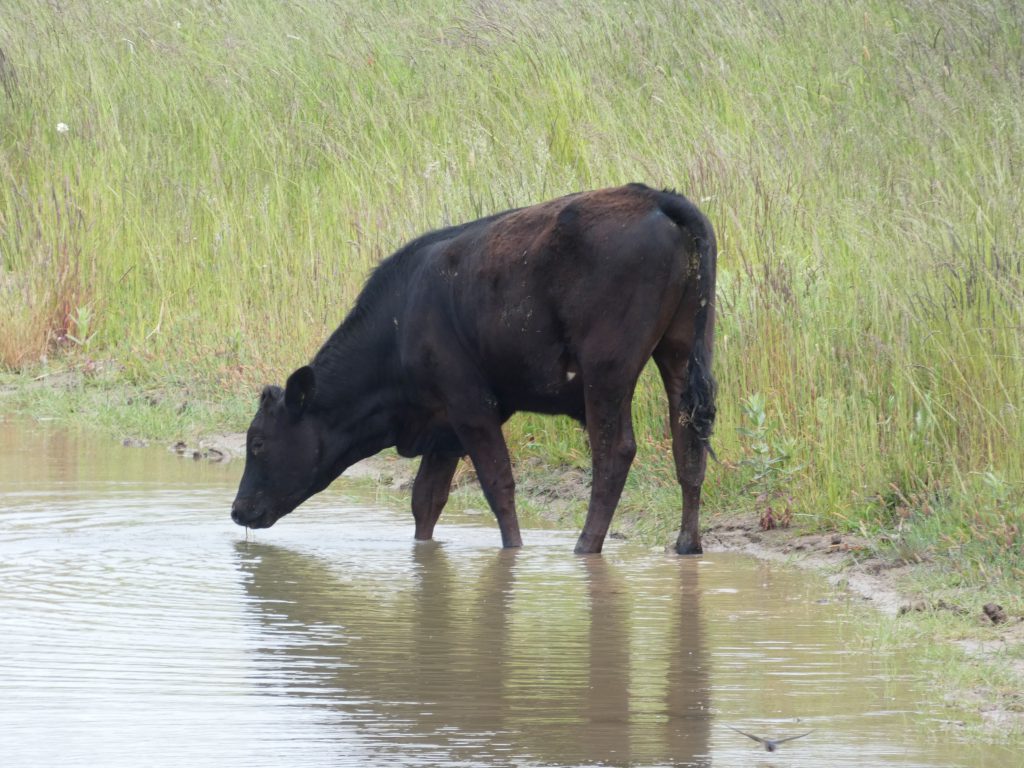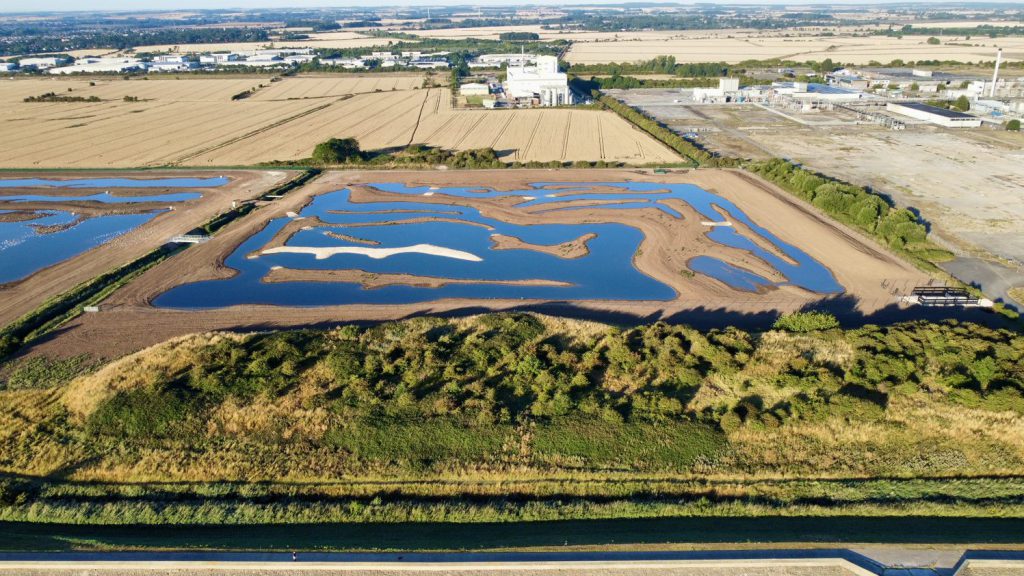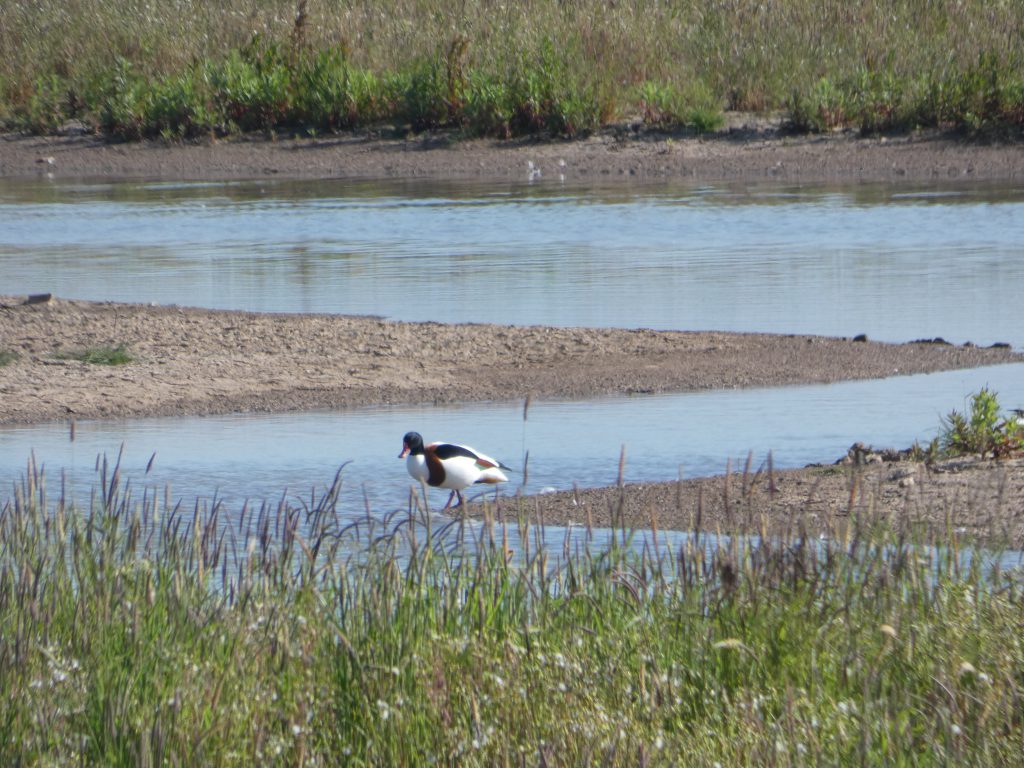North East Lincolnshire Council is leading the way in showing how industry and nature can thrive side-by-side.
An innovative environmental project sees rare birds visiting the area as industry interest grows in North East Lincolnshire’s award-winning mitigation sites.
Two large areas of wildlife that can counter the legal requirement for developers to set aside land for wildlife have been developed by North East Lincolnshire Council. Cress Marsh and the more recently developed Novartis Ings are not only attracting an abundance of species they are, importantly, attracting the interest of businesses that may not have time to look at such mitigation sites.
Cllr Philip Jackson, North East Lincolnshire Council leader and portfolio holder for economy, net zero, skills, and housing, said: “This ground-breaking initiative is a real lure for businesses having to adhere to environmental regulations, as all the work has been, and continues to be, completed by our ecology team in North East Lincolnshire.
“Aside from the industrial draw, it is also wonderful that Cress Marsh and Novartis Ings are attracting so many different species of bird, including the Temminck’s stint, which I understand is very rare. This is a perfect example of how nature and industry can grow and thrive side-by-side as we look to build our economy whilst protecting our habitat,” he added.
Listed under Schedule 1 of the Wildlife & Countryside Act 1981 (as amended), the Temminck’s stint is a member of the sandpiper family. These tiny waders are passive migrants, and a rare find. A very small number were once known to breed annually in northern Scotland, the south-western edge of its Arctic breeding grounds – but these records have declined in recent years and the Temminck’s stint is no longer an annual breeder in the UK. Most sightings are recorded in spring as they return to the Arctic from their African wintering grounds.
Cress Marsh and Novartis Ings wetland sites were initially created in partnership with NELC regeneration partner EQUANS (then ENGIE), Natural England, the Lincolnshire Wildlife Trust, the RSPB, the Humber Nature Partnership, the Environment Agency, and landowners and developers. The south Humber bank is a Special Protection Area (SPA), Special Area of Conservation (SAC), SSSI and a Ramsar site (Natura 2000).
Many wading birds use the Humber estuary as a ‘stopping off’ point on their migration journeys, where they can feed on the very rich invertebrate food source on the mudflats. Large numbers of golden plover, lapwing, black-tailed godwit, curlew, and others also stay all winter to benefit from the relatively mild climate combined with a reliable food source revealed twice a day by the tide. Eventually, most migrate back to their northern breeding grounds in the spring.
Sian Niblo, Ecology Technician at NELC, said: “Cattle are the main management tool, the site is grazed from April to November by cattle breeds suited to wetland habitat. Stocking density is determined by vegetation growth, this year initial herd numbers have increased from 21 to 42 cattle at Cress Marsh, and from three to ten cattle at Novartis Ings. Cattle are grazing on the site to naturally mow the grass, creating microhabitats suitable for the invertebrates the waders feed on.
“We have seen breeding activity with avocets, little ringed plover, mallard, lapwing, and shelduck on both sites.
“Since going live in December, Novartis Ings is already showing promise as a high tide roosting site, with wader numbers increasing at high tide. We have seen more than 1,000 black-tailed godwits, 500 dunlin, and 300 lapwings. At Cress Marsh, we have records of amphibians and reptiles, as well as numerous dragonflies, damselflies, butterflies, and moths. It is too early for this data at Novartis Ings.”
Part of North East Lincolnshire Council’s SHIIP project (South Humber Industrial Investment Programme), the two sites now total approximately 75 acres of designated ecological land. SHIIP was created to encourage long-standing businesses and start-ups to take advantage of the creation of new industrial sites and major infrastructure investments, including the Pioneer Business Park and Humber Link Road.
Novartis Grimsby and Solenis were instrumental in NELC’s acquisition of these sites.



Share this article